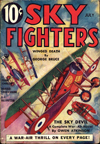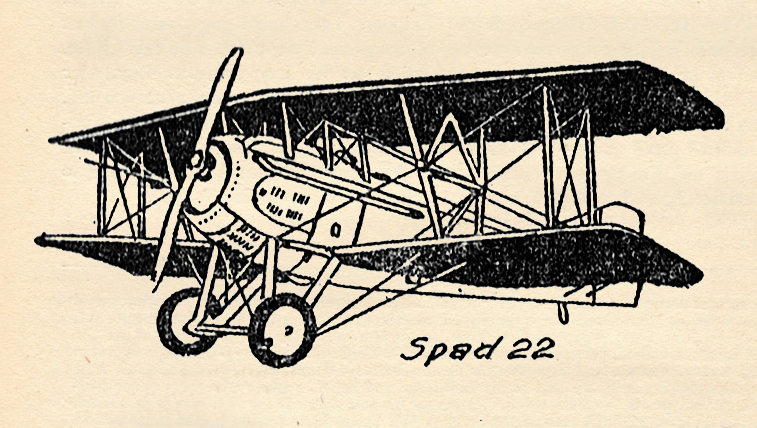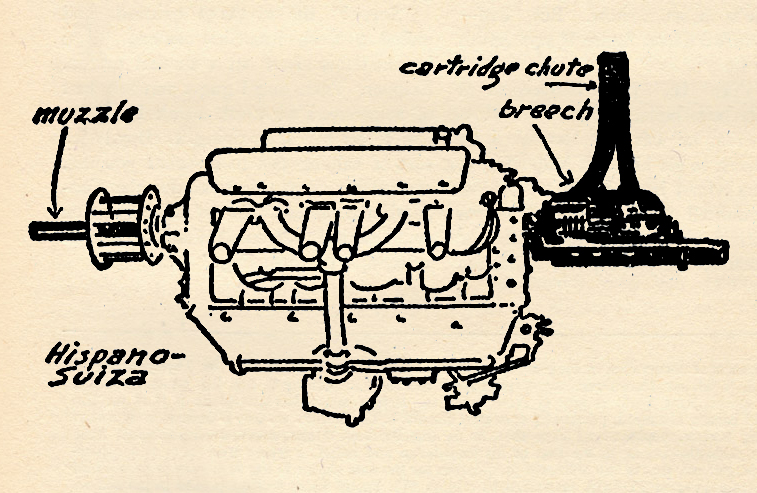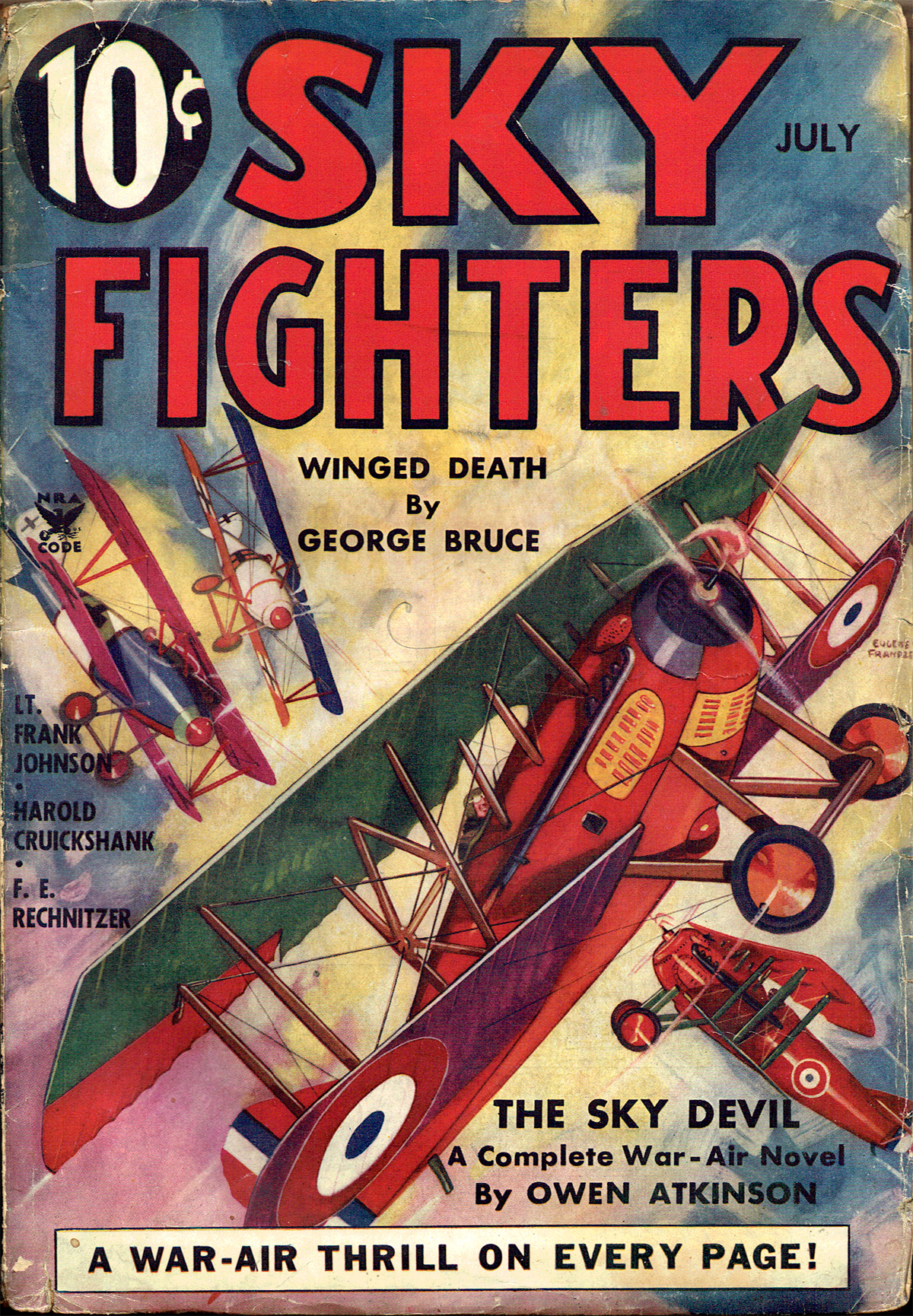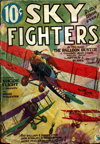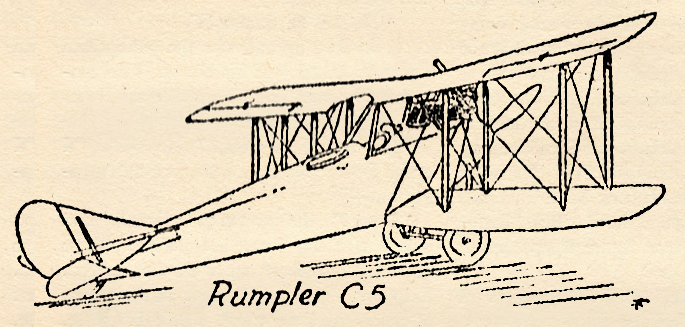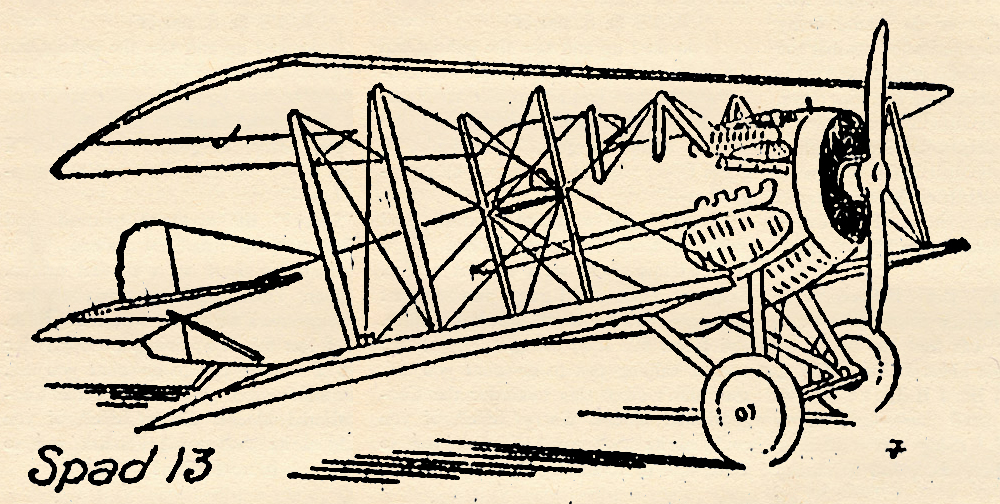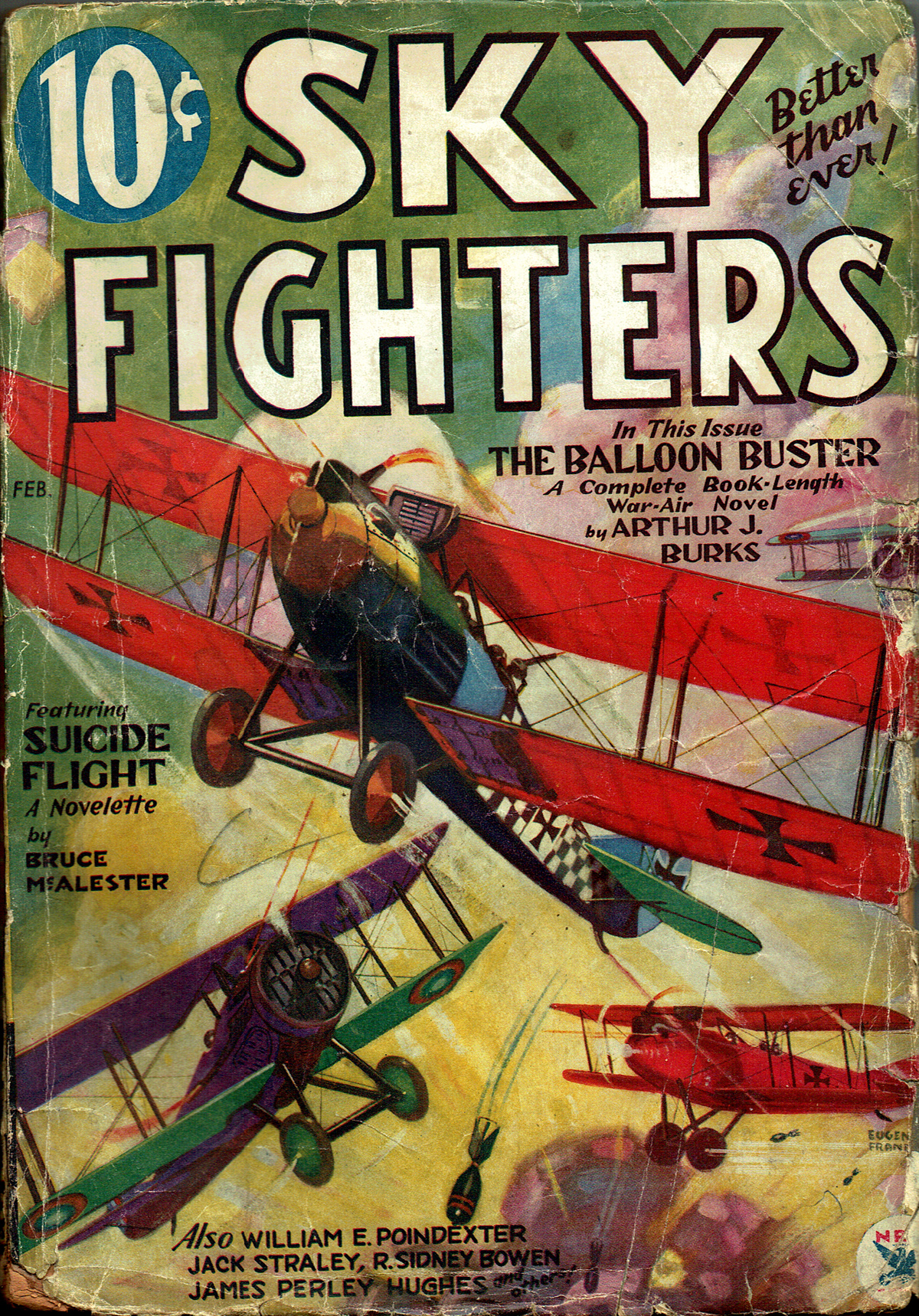“Sky Fighters, October 1935″ by Eugene M. Frandzen
Eugene M. Frandzen painted the covers of Sky Fighters from its first issue in 1932 until he moved on from the pulps in 1939. At this point in the run, the covers were about the planes featured on the cover more than the story depicted. For the October 1935 cover, Mr. Frandzen features the classic age old battle of Spad 13 C1 vs Fokker D7!
The Ships on the Cover
THE first Spad made its debut in 1916. 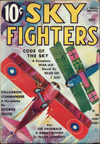 It was a heavier ship than the French manufacturers usually turned out. They were prone to seek speed by making engine, wings and fuselage all as light as possible.
It was a heavier ship than the French manufacturers usually turned out. They were prone to seek speed by making engine, wings and fuselage all as light as possible.
Then up popped the first Spad with its heavy Hispano-Suiza motor and its rigidly braced body and all around husky construction. It knocked the spots out of the lighter type of machines. Each succeeding model got heavier and each engine had more power.
Aviators put these husky Spads into prolonged power dives that other machines could not possibly make.
The Finest Fighting Plane
The Lafayette Escadrille swung over from Nieuports to Spads and any French squadron that could beg, borrow or steal them parked themselves in Spads and went up into the skies confident that they had the finest fighting plane in existence.
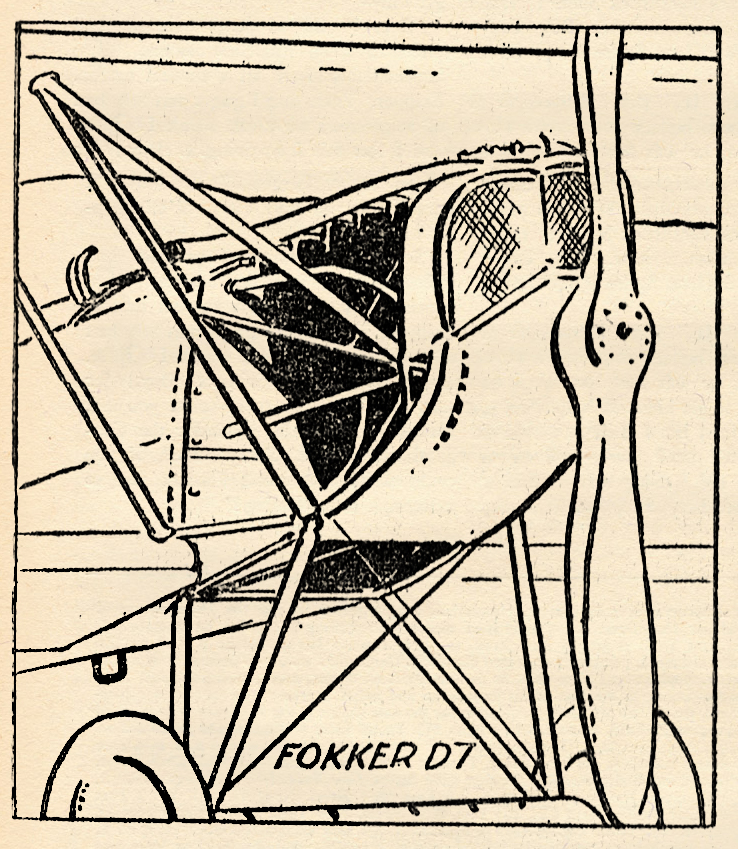
Of course there was a difference of opinion over on the German side of the line. The Fokker D7 made its appearance and the Heinie flyers just knew that they had the finest machine that ever sprouted wings. Therefore when the confident opposing war flyers, one in a Spad 13 C1 and the other in a Fokker D7 decided to smack each other with a few well placed slugs, it was an interesting show. And doubly interesting if two men happened to be aboard a one-place Spad.
Story of the Cover
Fifteen minutes before the action depicted on the cover, the Spad pilot set his ship down on German territory at a prearranged spot. A figure crawled from a clump of brush, raced to the Spad and shinned onto the right wing. Up zoomed the Spad with its precious wing passenger, an A1Iied intelligence operator who had documents that were important enough to cause three generals to be waiting at that moment at the Spad’s drome.
At a thousand feet the German archies started bursting in profusion. One lucky she11 sheared the undercarriage nearly off the Spad. It lurched and staggered with the swaying encumbrance. The wing passenger inched his way to the cockpit the pilot handed out a small hunk of iron.
Bullet Hemstitching
The passenger went to work just as a Fokker went into action. Three minutes of scientific prying on the shattered undercarriage released it and the Spad leaped forward with ten miles extra speed. It turned on the Fokker and hemstitched it from stem to stem.
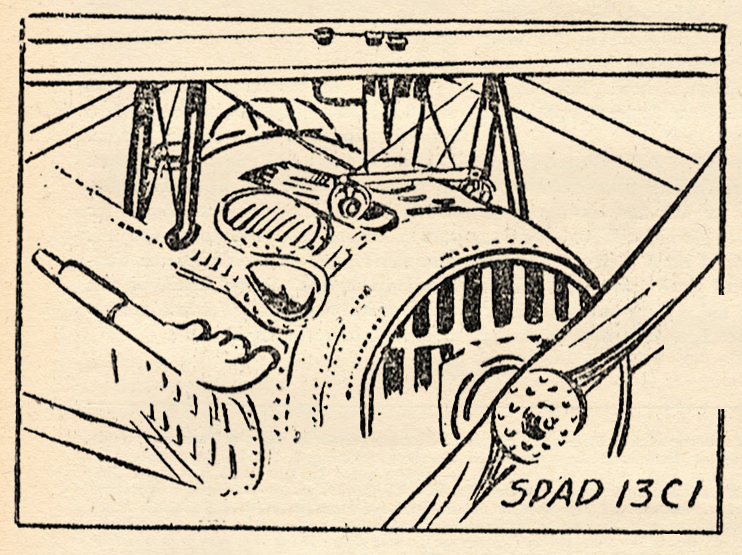
The German with two minor wounds admitted the Spad, if it didn’t carry wheels, was the better ship.
He dove out of the fight cursing the anti-aircraft gunners who had ruined a sure kill for him. His only consolation was that his foe’s landing would be about as soft as a racing locomotive hitting the rear end of a cement train.
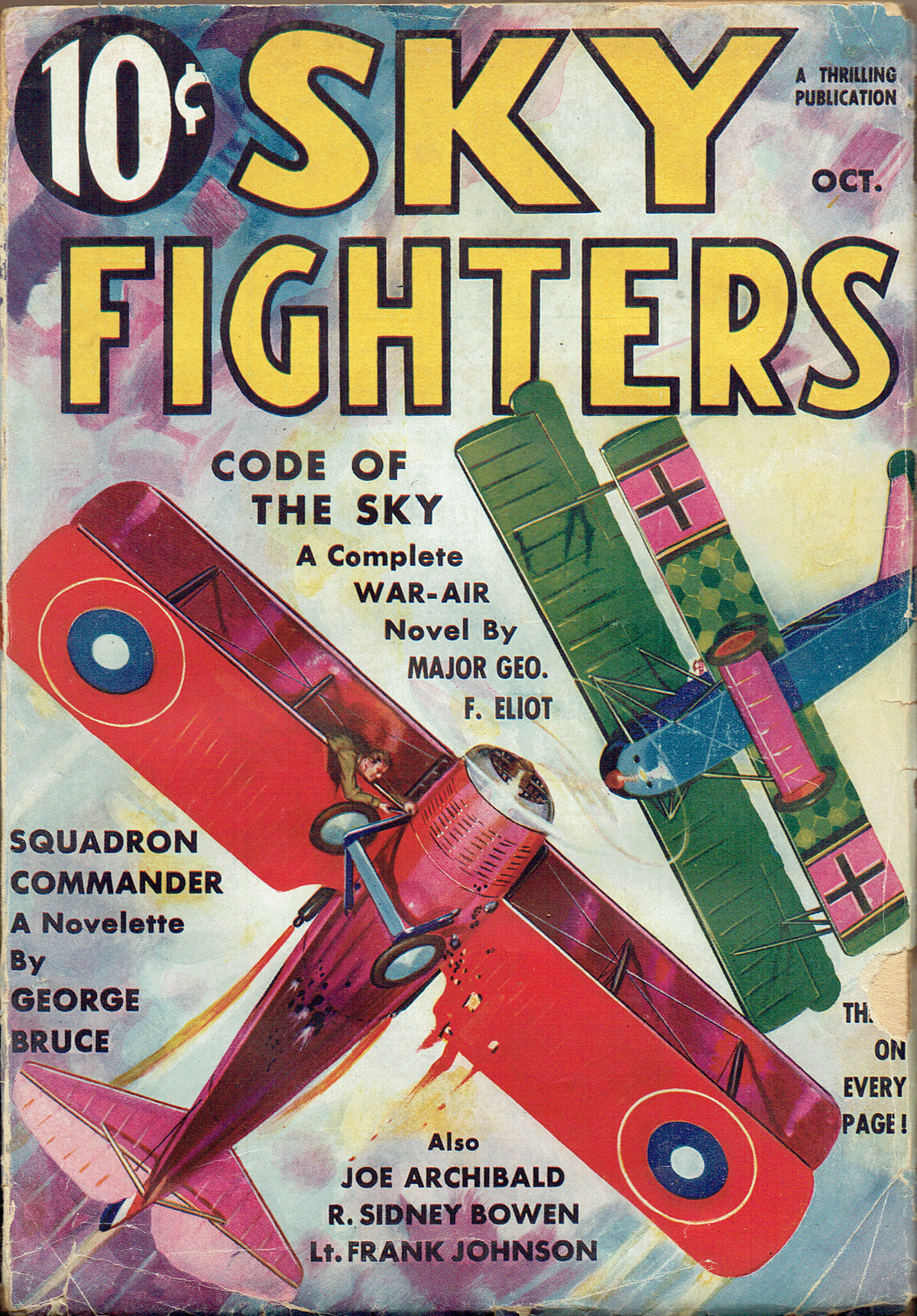
Sky Fighters, October 1935 by Eugene M. Frandzen
(The Ships on The Cover Page)





